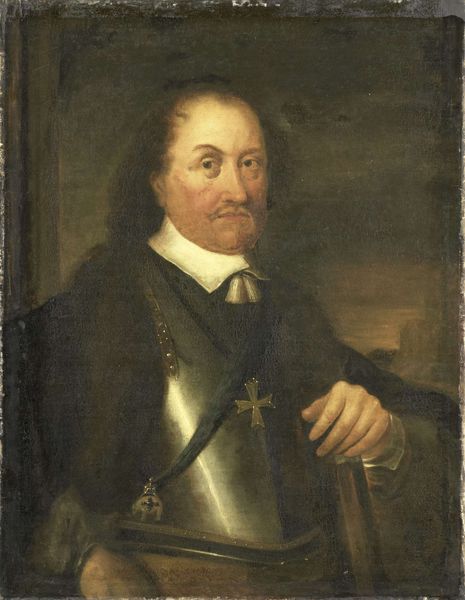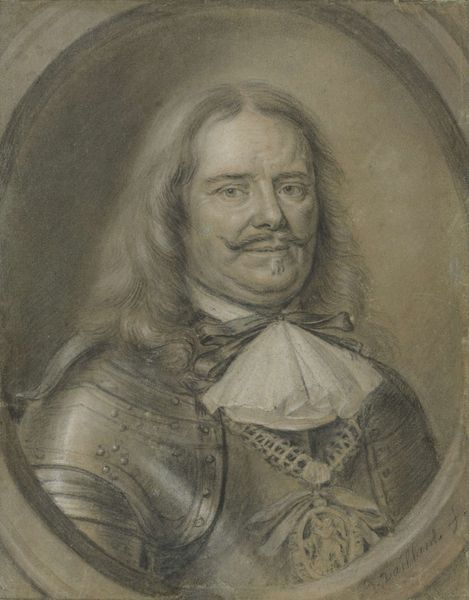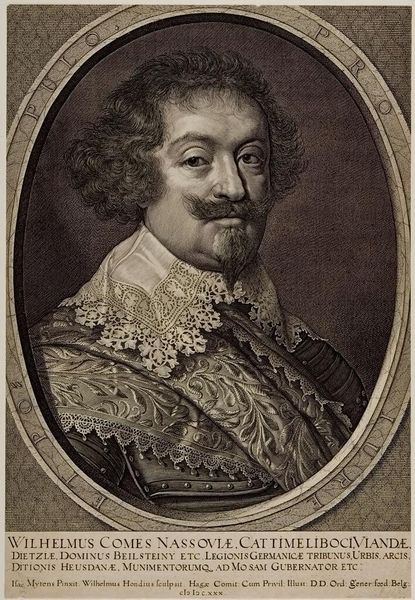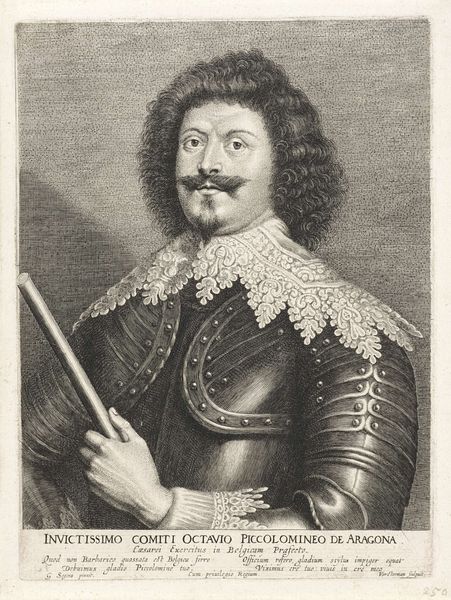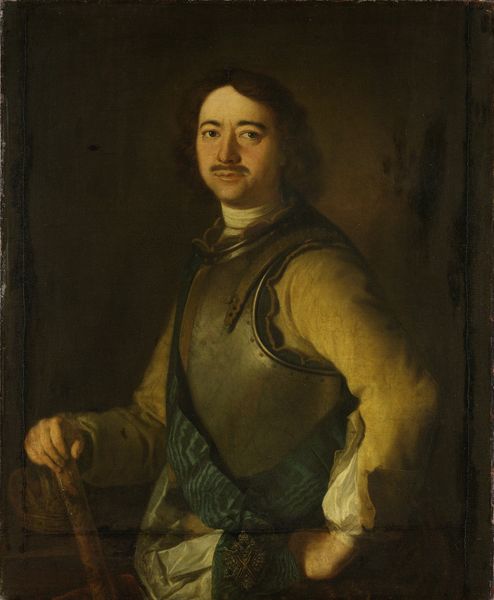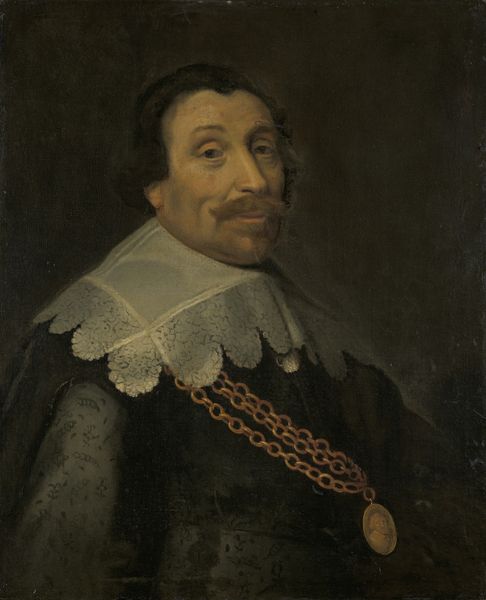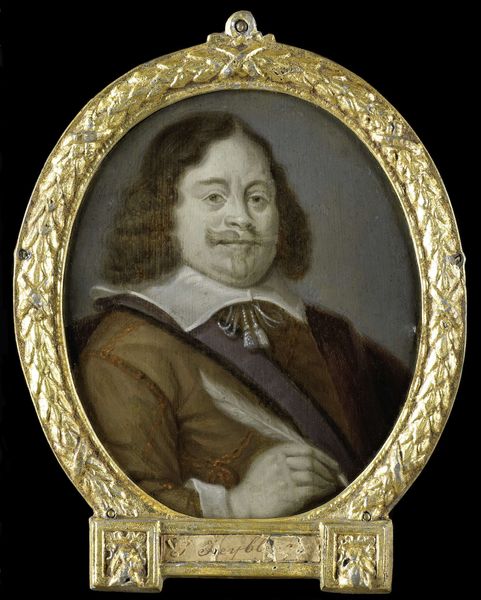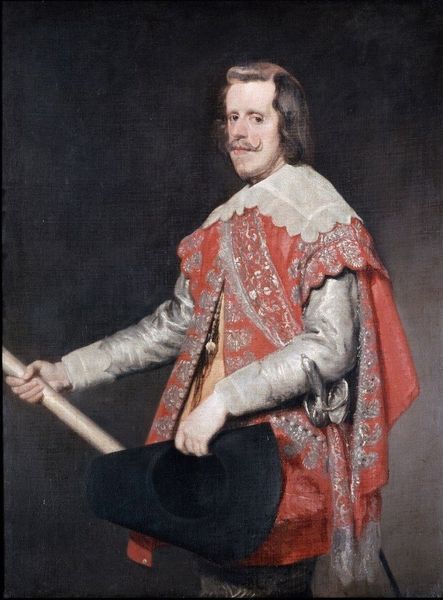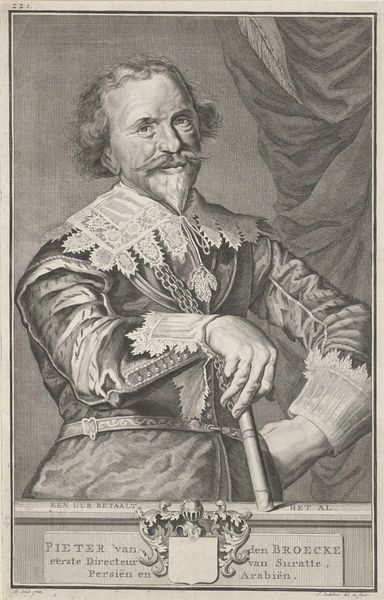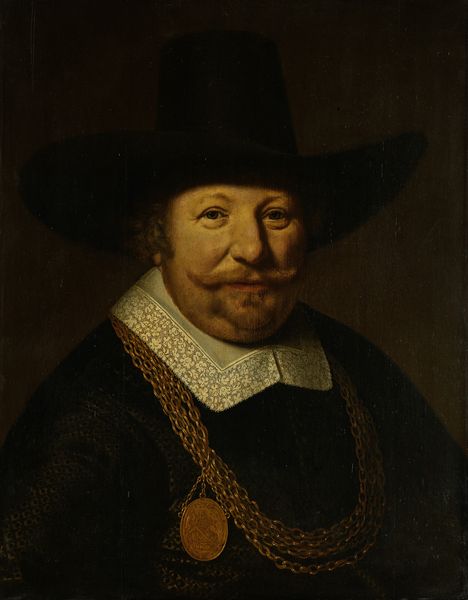
Dimensions: height 66 cm, width 54 cm, depth 5.3 cm
Copyright: Rijks Museum: Open Domain
Editor: We’re looking at a portrait of Michiel Adriaensz de Ruyter, Vice Admiral, painted with oil on some kind of panel. It looks like it was created before 1893, and attributed to Hendrick Berckman. I’m struck by how imposing the subject is. What details stand out to you? Curator: It is tempting to read a heroic narrative, but the strength of this piece lies in its formal organization. The stark contrast between the dark background and the crisp white collar creates a focal point, immediately drawing the eye to de Ruyter’s face. Then we see that horizontal mustache mirroring that rigid collar. What do you notice about the light? Editor: I see what you mean; everything leads to the face. And the light makes his sash really stand out with its embroidery. The way it cuts diagonally across the frame is dynamic. Is there some reason behind that organization? Curator: Note the deliberate distribution of weight. The density of detail in the gold sash, which, with a critical eye, can be broken down into geometric shapes and patterns. This prevents the composition from feeling unbalanced against the expanse of dark fabric. Editor: So, you are saying, the artist used compositional strategies, to, maybe, direct how we interpret de Ruyter? Curator: Precisely. The composition is designed not just to depict, but to actively shape the viewer’s perception. This reveals a constructed reality rather than a simple representation of the Vice Admiral. This close study also emphasizes the relationship between form and content. Editor: Thinking about it formally has made me see aspects of the painting I totally missed before! Curator: Indeed, sometimes we overlook the aesthetic structures when captivated by narrative.
Comments
No comments
Be the first to comment and join the conversation on the ultimate creative platform.

